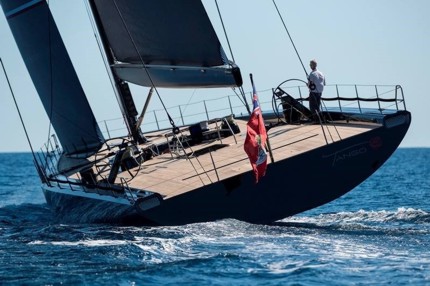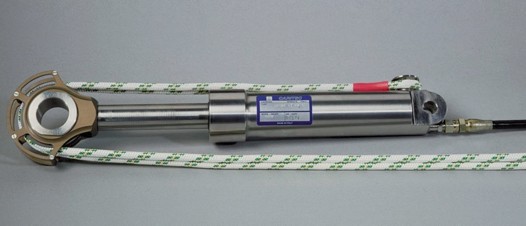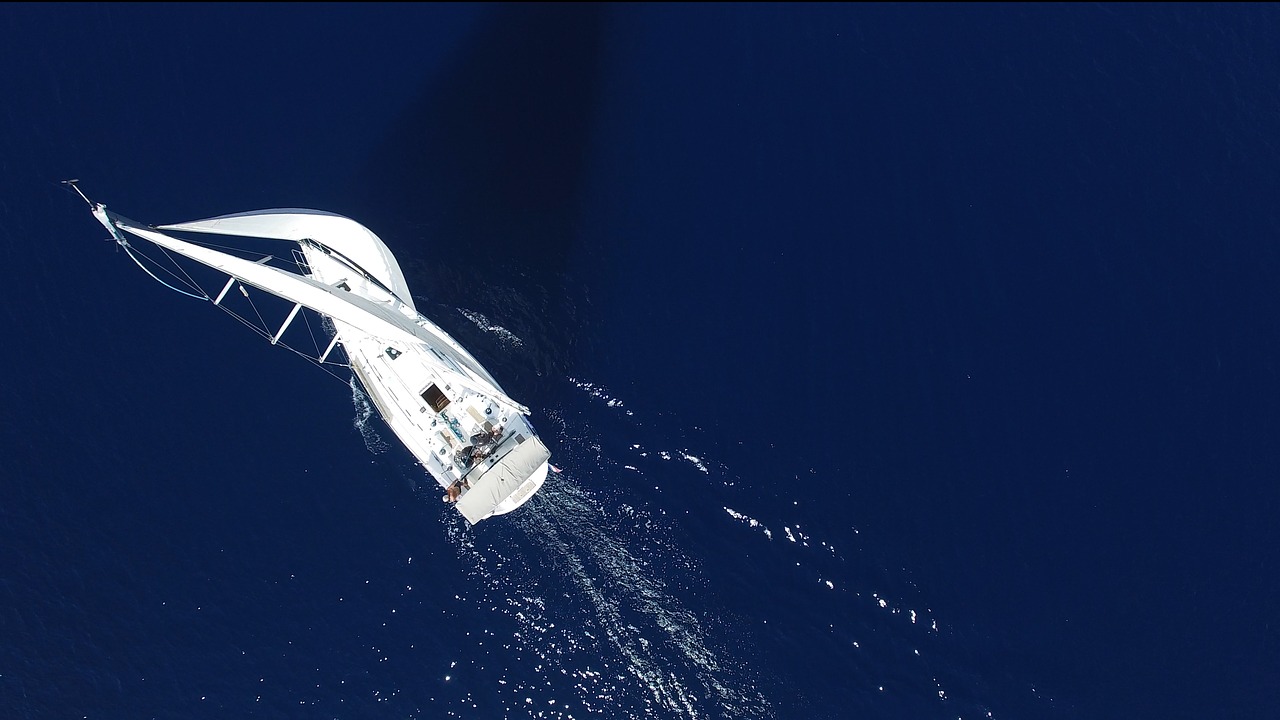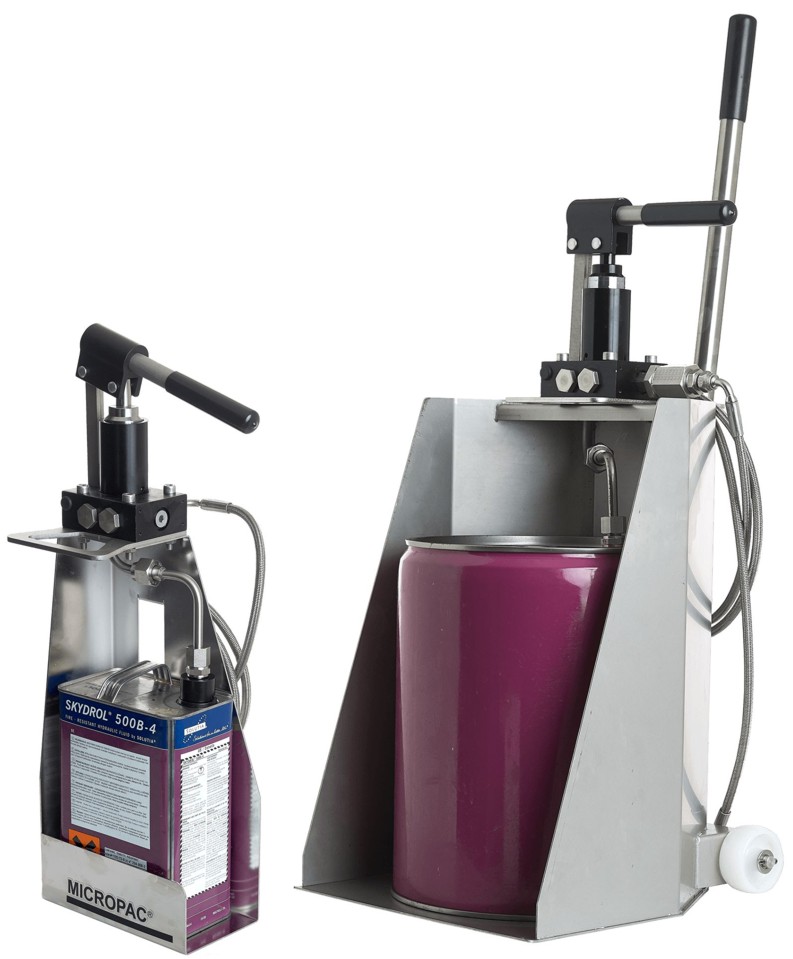Making sense of marine hydraulic sailing superyachts and what works on a weekend sailing boat.

All hydraulic Wally yacht equipped with Cariboni. Image- Cariboni.
Back in 1765, Nelson’s HMS Victory was considered ultra-high tech, a top-of-the-range mechanical platform. Up to 37 sails could be flown at the same time, with a rigging that used 26 miles of rope and 768 “blocks” or pulleys required to either change the direction of a rope or boost mechanical advantage to provide massive forces.
Fast forward 250 years and one of the most complicated examples of high tech on the seas today is an America’s Cup boat. The 2017 America’s Cup race showed us what the ultimate hydraulic yacht could achieve. It showed us the good, the bad and the ugly — and it showed us how far hydraulic-assisted sailing can go.
These engineering masterpieces used a composite aerofoil wing sail in place of traditional fabric, achieving speeds of up to 50 knots (57mph). The massive wing was controlled using hydraulics, and four profiled “dagger boards” or “foils” also relied on hydraulics to be lowered and trimmed.
High-tech they may have been, but was the use of hydraulics a sell-out to the purity of sailing?
While racing, two or three crew members were required to wind massive “grinder” winches, driving hydraulic pumps to generate the few kW of energy required to operate all the hydraulics.
The winning team, New Zealand, found competitive advantage by using pedal power on the hydraulics instead. Will the tech trickle down for the pleasure sailing yacht? Hydraulic actuated aerofoils are the winner for the Americas Cup but vulnerable structures on smaller yachts.
Reducing the sail area will never be as easy as tried-and-tested furling of fabric — as even Nelson would have told you.
If you want to operate a yacht with hydraulics, where is current technology? Lots is commonly used, especially on larger vessels and superyachts. How much of this translates to a “smaller” yacht? Let’s look at bolting hydraulics into a 50-foot yacht.
This length is manufactured in quite large numbers in factories around the world, yet large enough to justify being power operated. Sailing this size yacht involves high forces and hard work, requiring an energetic crew if everything is manual. What hydraulic and power-operated systems are currently available and how could you integrate more push-button “gizmos” to automate the sailing experience?
Let’s start at the bow.
Taking the muscle away from the foresail.
Mechanical rotary furling of the foresail is already a common option on cruising yachts. Traditionally, the crew would manually raise the jib up the wire forestay using a halyard round a pulley (block) at or near the top. Nelson would have recognised this. A big innovation from the 1940s was to make the forestay into a solid grooved track that could spin. The foresail is pulled up this track semi-permanently then the sail is rolled tight (furled) or let out using manual lines around a drum at its foot. It was only a small step to make this manual process an electric one, using a dc motor and gearbox integrated into the foot of the rolling forestay or a hydraulic motor run from a centralised hydraulic pump on bigger yachts.
Handling the two ropes (sheets) that control the foresail back to a winch in the cockpit could require more serious engineering than conventional winches. While power winches are widely used even on sub-40 foot yachts, handling sheets is still quite intense. Is there an easy way of using hydraulics or electrics to sheet in the foresail by slackening the jib sheet on one side while pulling the other side and trimming the sail to the right position? On exotic sailing yachts such as the Wally 100, those Italian masters of ultra-lightweight marine hydraulics, Cariboni, use their cylinders under the deck working through a slot, allowing crew to sheet in or let out the foresail sheets by moving cylinders rather than using a winch. Look at the clean deck and stunning design on the Wally and you will see what clever marine hydraulics can do. The designers have traded low-tech winches (even if they are electric or hydraulic) for some serious engineering. Would pressing buttons rather than using winches take some getting used to? Maybe. The drum of a winch is an amazingly versatile tool to handle high loads on rope, but there is skill involved. Maybe high-tech cylinders make handling the jib sheets that much easier.
An optimum keel design but shallow draft when you need it.
A modern cruising yacht will invariably have a fin keel either moulded into the hull with ballast at its lowest point or a fabricated (or cast metal) keel bolted under the hull. An alternative is a swing keel or a drop keel, not unlike sailing dinghies. Boat manufacturers such as Southerly have for years used swinging centre plates to provide unique cruising vessels that can retract the keel using a hydraulic cylinder for navigating creeks or shallow moorings. Move to much larger sailing yachts and hydraulic drop keels or swinging keels are more common, as the deep drafts demanded by the design of large, high-performance sailing yachts are simply not very convenient for yacht harbours and marinas. Even a Bavaria 51 “production” sailing yacht has a draft of 2.2m which, although something a careful skipper could live with, might justify a hydraulic drop or swinging keel for ease of use. This facility can be designed into any sailing yacht — but at a cost. Hydraulics is the solution.
Don’t confuse hydraulic drop or swinging keels with canting keels where massive hydraulic cylinders cant (or tilt) the keel either side of vertical whilst tacking. Out and out round the world racing yachts such as the Open 60 use substantial composite hydraulic cylinders from Parker Hannifin’s “Lightraulics” range. Canting keels probably don’t come into our remit here.
The main interest
Move to the mast and hydraulics and powered systems abound. In-mast reefing — where the mainsail is rolled vertically through a slot in the mast onto a long vertical roller — is quite common on both mass-produced sailing yachts and larger vessels. The concept translates easily into hydraulic or electric powered in-mast roller reefing.
Much as you could use an electric or hydraulic-powered winch to haul the mainsail to the top of the mast, we think the in-mast reefing solution already provides a push-button option for many yachts. Integrate that into a “system” and you are into automation.
How do you use hydraulic or electric drives to assist or replace the mainsheet to control the position of the boom as it pivots on the gooseneck a metre or so up the mast from the deck? You can sheet in and let out the mainsheet using electrical assistance which is what winch manufacturer Harken and French yacht builder Jeanneau have developed in their Assisted Sail Trim™ system.
With this system, if the yacht heels (goes on its side) excessively, the mainsheet can be eased electrically to spill some wind and bring the boat more upright. This system offers a degree of automation now and is available on boats down to 35ft.

Stainless steel trim cylinder from Cariboni.
Can hydraulics offer anything that eliminates the traditional long mainsheet running around pulleys? Trying to use a hydraulic cylinder with no rope doesn’t seem to work as the action just isn’t there. We stand to be corrected.
Upmarket, large sailing yachts like the Wally 100 use the clever Cariboni sheet cylinder which is an ultra lightweight double-acting hydraulic cylinder with blocks (or pulleys) either end, fitted with a rope mainsheet that sits inside the boom, with just a single line back to the cockpit.
Could this system be used on, say, a 50ft pleasure yacht? The answer is probably yes, but you still need that expensive control gear. Maybe the boom becomes rather large as well.
While we are talking masts and mainsails, hydraulic kicking straps or boom vangs are well established for larger yachts. Manual hydraulics will do the job of pulling the boom down while sailing but piping up the cylinder to a hydraulic system is done on larger craft.
Sailboat rigging and steering
Hydraulics is already widely used to tension up the standing rigging of a yacht. A short stroke “pancake” hydraulic cylinder under the mast step controls the tension in the rigging while a hydraulic backstay tensioner will either change the shape of the mainsail or tension up the forestay for better foresail trim.
While tweaking the tension in the standing rigging while sailing is a requirement for racing yachts, it isn’t top of our wish list for a 50ft cruising yacht. It can be done, though.
Larger cruising yachts will probably already be using hydraulic steering where the rudder is moved using a “through rod” double acting cylinder powered by a reversible piston pump driven from the helm wheel.
Why through rod? Steering systems on all manner of vehicles and vessels find them handy, as the areas are the same either end of the cylinder and the amount of oil shuttling backwards and forwards to the reservoir is much reduced over conventional full/reduced bore ram designs.
This type of hydraulic steering dovetails very nicely into being driven by an autopilot which uses an electric hydraulic pump to move the ram one way or another to stay on a pre-determined course.
The automated sailing experience.
While many systems may be integrated to sail the boat automatically, whether it will happen as a matter of course is a question for the yachting community. It is a somewhat similar argument to the self-driving car quandary. Do you trust autonomous systems?
Cost is an instant issue, despite the market for a deskilled sailing yacht.
But the world loves tech and somebody who doesn’t want to fund the fuel bill on a powerboat but hasn’t traditional sailing experience might go for it if the product truly worked.
Reliability has to be an issue. Traditional rope and block systems are amazingly flexible when things go wrong. The sea is tough. Things jam, corrode and fail — with no room for failure on a hydraulic or electrical system.
A traditional skipper will find a work-around in their hour of need. Complex systems also don’t guarantee reliability over time or when underused.
Sarum Hydraulics wouldn’t relish struggling to fix cylinders packed in under decks, but it might well transpire that the weak link with the automated yacht was the dreaded electronics or even simple electrical connectors.
Maybe the biggest issue to confront is power consumption. A fully automated yacht will require a large battery bank, the charging of which will spoil the peace and quiet of a sailing boat. What is insignificant on a 150ft super yacht could be a major annoyance on a 50ft cruising vessel.
Some might live with that compromise, but we wouldn’t. We like the peace of a sailing boat too much.
Yacht hydraulics has some clever designs that meet the specific challenges of corrosion, rugged construction and light weight. Even if you have no interest in sailing, there is some inspiration for all designers.
We are manual marine hydraulics people. After 36 years, we are experts. If you need manual operation or a standby function, look on www.sarum-hydraulics.co.uk or call 0044(1)722 328388.
Useful Links.
The masters of yacht hydraulics from Italy. Cariboni. Thank you for the photographs.
More stunning hydraulic superyachts from Wally
Assisted sail trim from Harken and Jeanneau Or this YouTube video on assisted sail trim
Parker Hannifin “Lightraulic” composite cylinders as used on the ferocious Open 60 racer in their catalogue






Thanks for sharing such a useful content.
Marine Instruments are electronic devices that are used to measure marine equipment performance, including pressure and temperature monitoring and level transmitters. Selco USA, Inc. offers a premium range of high-performance Marine Instrumentation. Visit – https://selcousa.com/product-category/marine-instrumentation/